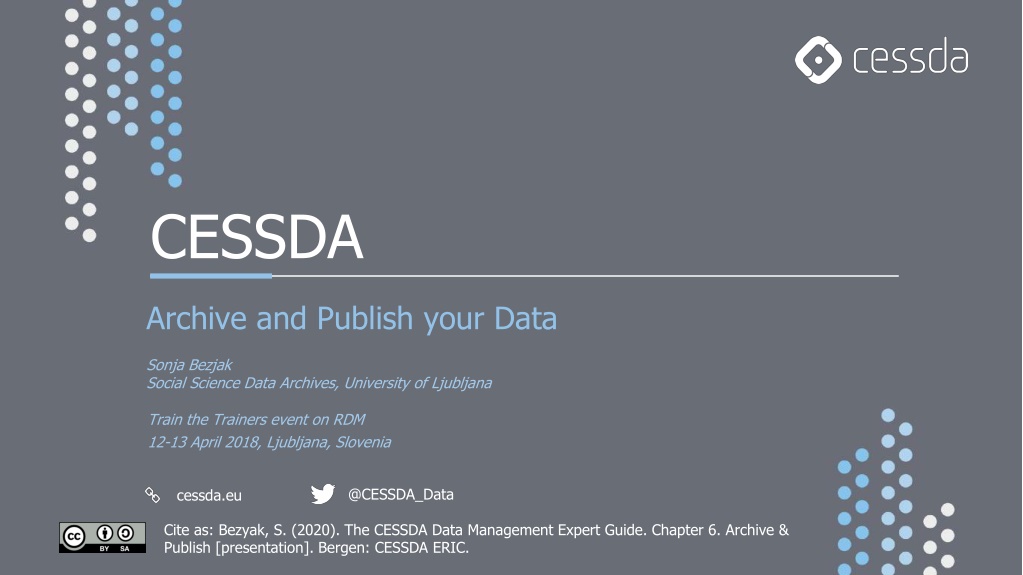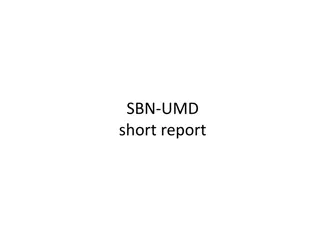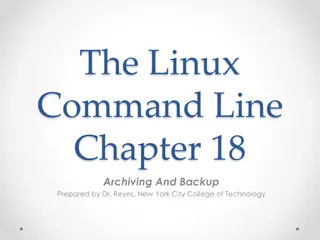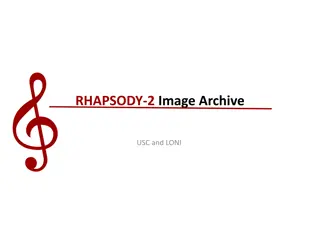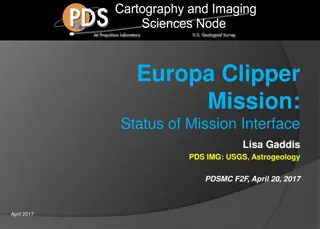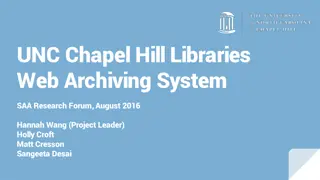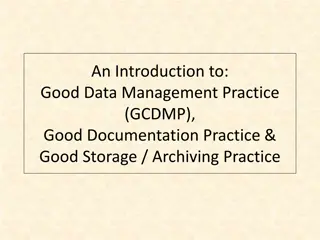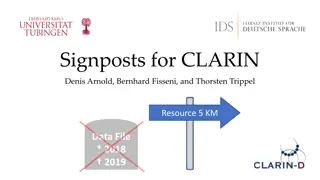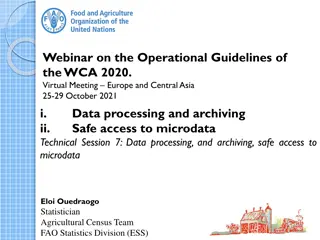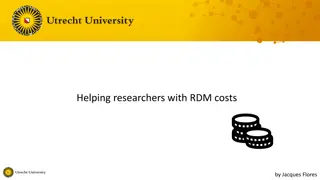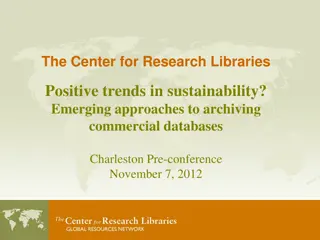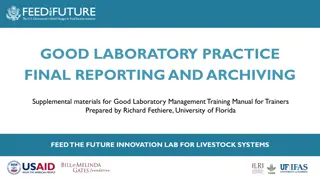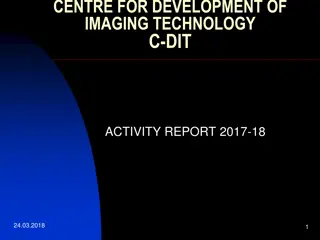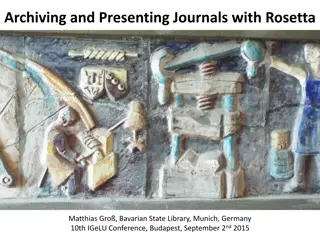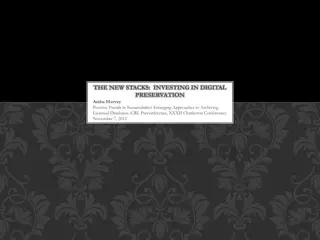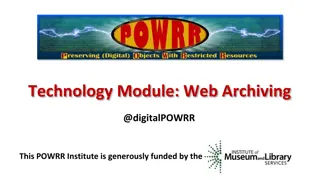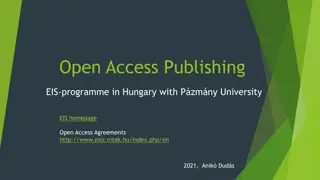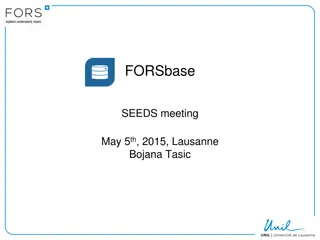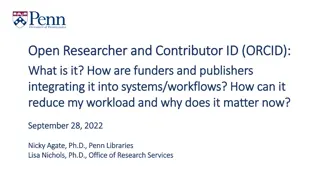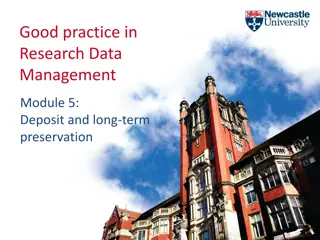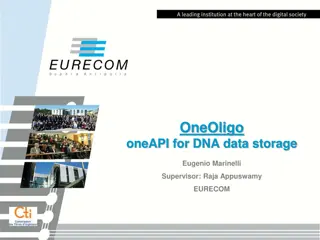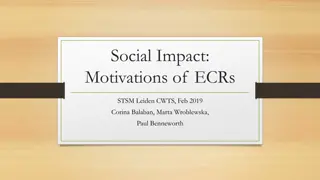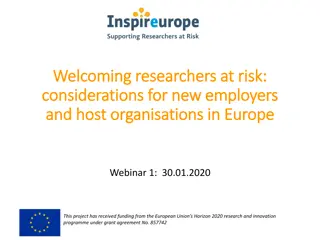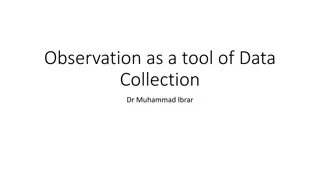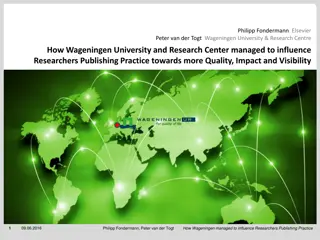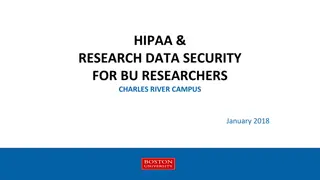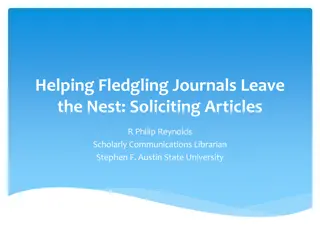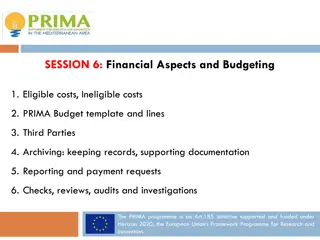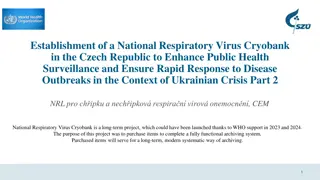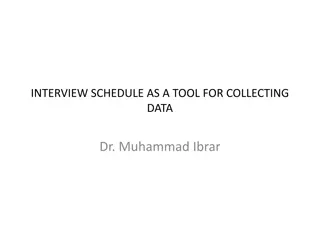Effective Data Archiving and Publishing Strategies for Researchers
Properly archiving and publishing research data is essential for maximizing its utility across time. This presentation covers reasons for archiving and publishing, data publication routes, domain-specific repositories, CESSDA archiving, and strategies for promoting data publication.
Download Presentation

Please find below an Image/Link to download the presentation.
The content on the website is provided AS IS for your information and personal use only. It may not be sold, licensed, or shared on other websites without obtaining consent from the author. Download presentation by click this link. If you encounter any issues during the download, it is possible that the publisher has removed the file from their server.
E N D
Presentation Transcript
CESSDA Archive and Publish your Data Sonja Bezjak Social Science Data Archives, University of Ljubljana Train the Trainers event on RDM 12-13 April 2018, Ljubljana, Slovenia @CESSDA_Data cessda.eu Cite as: Bezyak, S. (2020). The CESSDA Data Management Expert Guide. Chapter 6. Archive & Publish [presentation]. Bergen: CESSDA ERIC.
Overview Archiving and publishing your data properly will enable both your future self as well as future others to get the most out of your data. Areas to be covered: Reasons to archive & publish; Data publication; Different data publication routes; Domain specific data repository; Publishing with CESSDA archives; Promoting data publication.
Towards archiving & publishing ARCHIVING ? PUBLISHING ? SHARING ?
Archiving data Store your data in a suitable file format, with adequate documentation and keep your data safe on along term Make sure you can read and access the data later on Allow access to others for verification purposes
Publishing data Is the act of publicly disclosing the research data you've collected, Making them findable, Accessible and Reusable.
Why not excuses We might want to use it in a paper; It is not very interesting; People may misinterpret the data; Poor quality;
Why researchers should think about A&P? Career benefits increased visibility, reuse and citation and therefore recognition of scholarly work Scientific progress enabling new collaborations, new data uses and links to the next generation of researchers Norms openness of research data is at the heart of scientific ethics External drivers Funders and publishers requirements
How to select data for A&P? Does your data have potential value in terms of reuse, national/international standing and quality, importance for history, uniqueness (the data contain non-repeatable observations), originality, size, scale, costs of data production or innovative nature of the research?
How to select data for A&P? Is your data set reusable? Can the data be read and used? Are metadata available and sufficient to let future users understand your data? Any legal objections which prevent the data from being published?
Expert tips Timing is everything! If you archive or publish your data as soon as data collection ends, your knowledge about your data is still very high.
What is a data publication? It is expected that a Data Publication will ensure that data will potentially be considered as a first-class research output | Knowledge Exchange (2013). (Brase et al., 2009)
What is a data publication? Publishing with a capital P Properly documented with metadata; Reviewed for quality; Searchable and discoverable in catalogues (or databases); Citable in articles. (Brase et al., 2009) Publishing with a small p There are no guarantees that the data will be there after some time or that the files will not get corrupted.
Which data repository to choose? Recommended by OpenAIRE(2016b): 1) A (trusted) domain repository already established for your research domain. 2) If a domain repository isn't available, use an institutional research data repository. 3) If none of the above is available, use a general purpose repository like Zenodo(n.d.), Figshare(n.d.) or Harvard Dataverse(2017) 4) Find your own at re3data.org: a registry of over 1500 research data repositories.
Expert tips Choose between self-archiving and expert help While self-archiving is a quick and easy way to publish data, archiving with the help of an expert will enhance data quality.
Why publish with CESSDA archives? (Trusted) domain specific data repositories For high-quality data with a potential for reuse, we recommend you to assure long-term access by publishing them with a trusted repository, like many of the CESSDA archives. Advantage of having expert help within reach help you to increase the comprehensibility, visibility, findability, reusability, longevity and the overall quality of your datasets.
Why publish with CESSDA archives? Accessible and protected when needed CESSDA archives aim to make the research data accessible with as few restrictions as possible, while at the same time protecting (sensitive) personal data from inappropriate access. Comprehensibility CESSDA expert will advise you on what information is needed to understand your data. Ensuring that your metadata is as rich and complete as possible helps in making sure your data meet the F (Findability) and I (interoperability) in FAIR data management.
Why publish with CESSDA archives? Find ability and visibility When you publish your data at a CESSDA archive your data become more visible through data citation, scientific credits, active promotion. Accessibility and reusability With a combination of data licensing (see 'Data licenses') and access categories (see 'Access categories') CESSDA data archives can control the exact level of access and permitted reuse.
Why publish with CESSDA archives? Longivity Experts at CESSDA archives add to the longevity of your datasets in the following ways: advice on the best file formats for long-term preservation; expertise and services to convert data to new formats; add value to the data, for instance by new functionality to query the data. Quality In several CESSDA archives, an expert will review the quality your data by judging e.g. the content of the study, methodology, relevance, legal consistency and documentation of materials.
How to make data more visible Choose open access Licence your data Always cite your data Publish in a data journal Teach with your data set Choose a data repository which promotes your data Grow your data s impact with altmetrics
Hands-on 1) Check if and how data is cited in the article 2) Prepare a Study description (ADP)
Cite the data - ADP The citation is composed of: [Principal Investigators]. ([Version Year]). [Title]. Slovenia, Ljubljana: Univerza v Ljubljani = University of Ljubljana, Arhiv dru boslovnih podatkov = Social Science Data Archives. [Study Number] Accessible at: [link] https://www.adp.fdv.uni-lj.si/opisi/mp14/
Cite the data - GESIS The citation is composed of: [Principal Investigators] ([Version Year]): [Title]. [Data Collector]. GESIS Data Archive, Cologne. [Study Number] Data file Version [Version Number], [DOI] https://www.gesis.org/en/services/data-analysis/more-data-to-analyze/data- archive-service/citation-of-research-data/
Citing new data types Citing rapidly changing data is challenging. The Data Cite organization suggests to: Cite the continuously updated dataset and only add an access date and time to the citation. However, this means that the citation does not result in access to the resource as cited when it was changed in the meantime. This limits reproducibility of the work that uses this form of citation. Cite a specific snapshot (i.e., a copy of the entire dataset made at a specific time) but this requires unique identifiers for each version/snapshot of data.
Concluding remarks Archiving and publishing your data properly will enable both your future self as well as future others to get the most out of your data.
Questions Sonja Bezjak Social Science Data Archives University of Ljubljana Train the Trainers event on RDM 12-13 April 2018, Ljubljana, Slovenia @CESSDA_Data cessda.eu
